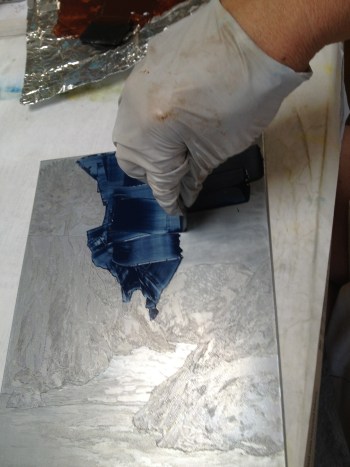
Exciting news! At the opening reception on February 15, I received the Public Prize Award in the biennial René Carcan International Prize for Printmaking for the 4 original prints that I have on display there! Thanks to all my friends, family and collectors who took the time to go online and vote for my work!
The exhibit is at the Bibliotheca Wittockiana, a museum in Brussels dedicated to book arts, book binding and related disciplines. The show opened February 15th and closes May 15th of 2018.
Enjoy the entire exhibit online here: http://award.renecarcan.be/current_edition
For San Diego locals, you can enjoy 2 of the 4 images at the Del Mar Art Center Gallery until April 30. The joy of original prints is that they are “multiple originals”, and exist in a limited edition that can be on view in two places at once!
“Last Light” and “Resting on Razor Point Trail” can both be viewed in the gallery, located in the Del Mar Plaza, at the corner of 15th and Camino Del Mar. Gallery hours are Tue – Sat, 11-7 and Sun, 11-6.















































































